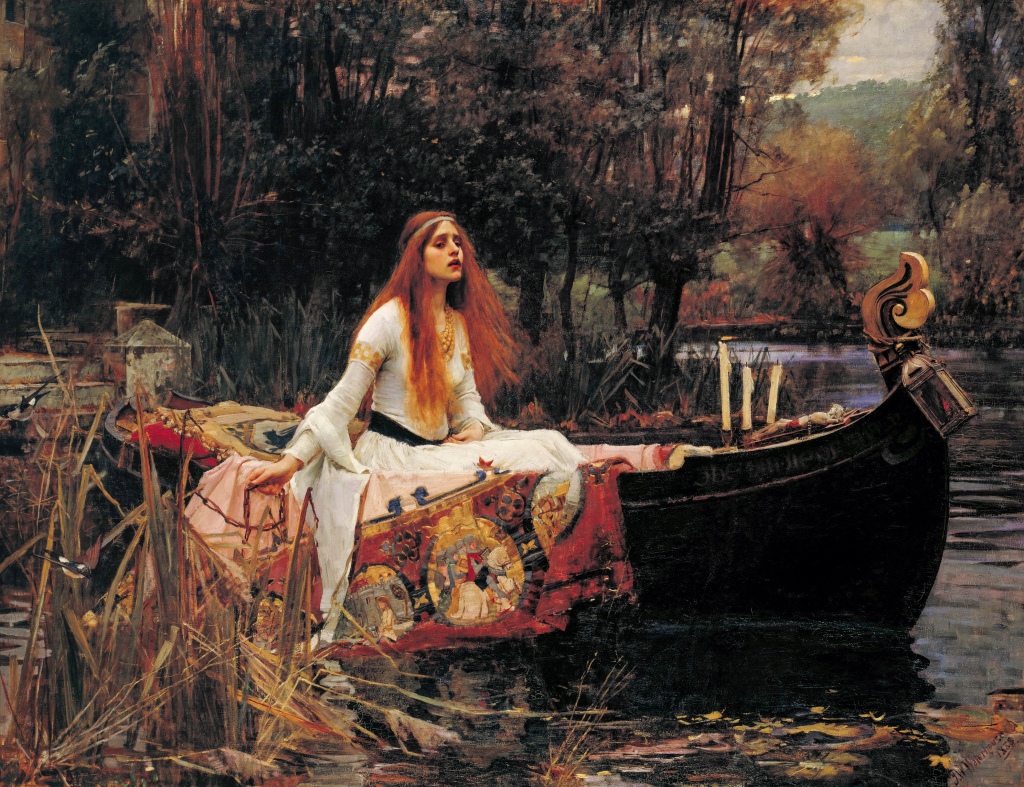
Painted in 1888, The Lady of Shalott is a representation of the ending of Alfred, Lord Tennyson’s 1832 poem of the same name. Waterhouse painted three different versions of this character, in 1888, 1894 and 1915. It is one of his most famous works, which adopted much of the style of the Pre-Raphaelite Brotherhood, though Waterhouse was painting several decades after the Brotherhood split up during his early childhood.
The picture illustrates the following lines from part IV of Tennyson’s ‘The Lady of Shalott’:
‘And down the river’s dim expanse
Like some bold seer in a trance,
Seeing all his own mischance –
With glassy countenance
Did she look to Camelot.
And at the closing of the day
She loosed the chain, and down she lay;
The broad stream bore her far away,
The Lady of Shalott.’
Tennyson’s poem, first published in 1832, tells of a woman who suffers under an undisclosed curse. She lives isolated in a tower on an island called Shalott, on a river which flows down from King Arthur’s castle at Camelot. Not daring to look upon reality, she is allowed to see the outside world only through its reflection in a mirror. One day she glimpses the reflected image of the handsome knight Lancelot, and cannot resist looking at him directly. The mirror cracks from side to side, and she feels the curse come upon her. The punishment that follows results in her drifting in her boat downstream to Camelot ‘singing her last song’, but dying before she reaches there. Waterhouse shows her letting go the boat’s chain, while staring at a crucifix placed in front of three guttering candles. Tennyson was a popular subject for artists of this period, particularly the Pre-Raphaelites. Waterhouse’s biographer Anthony Hobson relates that the artist owned a copy of Tennyson’s collected works, and covered every blank page with pencil sketches for paintings.



The landscape setting is highly naturalistic; the painting was made during Waterhouse’s brief period of plein-air painting. The setting is not identified, although the Waterhouses frequently visited Somerset and Devon. Waterhouse’s sketchbook contains numerous pencil studies for this and the painting of the same title made six years later. This second work shows the Lady at the moment she looks out of the window and the curse is fulfilled. Waterhouse also made sketches of the final scenes in which the boat bearing the Lady floats into Camelot.

2 thoughts on “The Lady of Shalott”
Comments are closed.